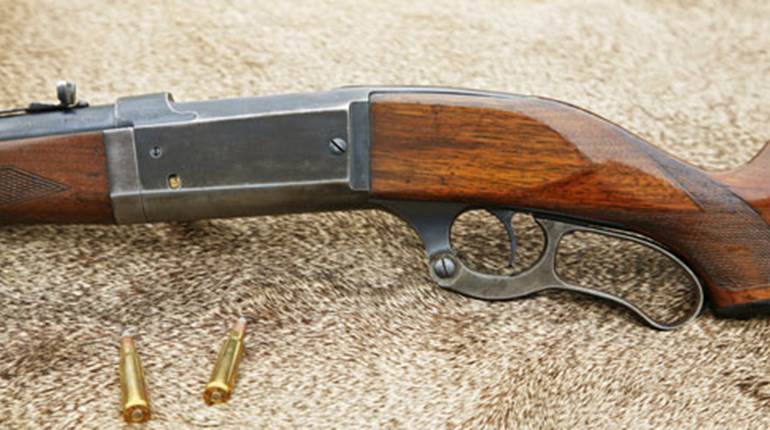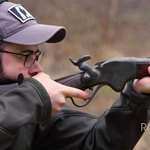
This article is a sidebar to Making the American Rifle at Colonial Williamsburg."
As the capital of the Virginia colony and later the fledgling Commonwealth, Williamsburg has had a long history as a repository of firearms. Its beginning was as a military outpost and depot on the then-frontier of the British Empire. In 1715, after it had become the colony’s capital, a magazine was built to house royal arms and powder. During the Revolutionary War, James Anderson’s blacksmith shop in the city would employ 40 men, many of whom worked repairing arms for the Continental Army.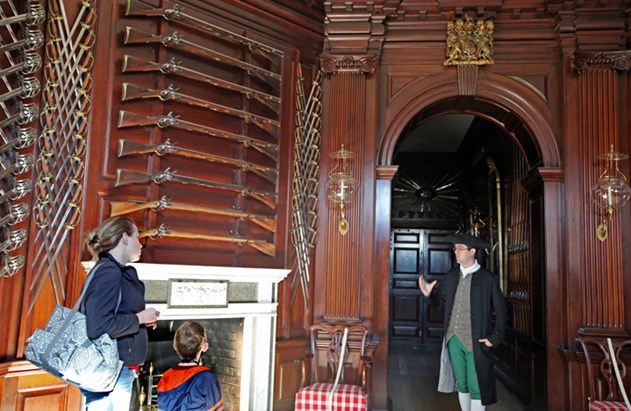
Today, the core of historic Williamsburg has been preserved by the Colonial Williamsburg Foundation as a “living museum” of pre-Revolutionary America. Since firearms were a part of daily life during those times, they are on display throughout Colonial Williamsburg.
“The collection reflects what was in use in the last half of the Colonial era,” said Erik Goldstein, senior curator of mechanical arts and numismatics at Colonial Williamsburg. “We set out to have a ‘sample platter’ of a variety of firearms from that time period.”
Almost all of the Foundation’s collection of nearly 500 firearms is on public view. The guns fall into two categories: those displayed in their original historical context, such as in a home, shop or government building; and those showcased in Colonial Williamsburg’s museum. 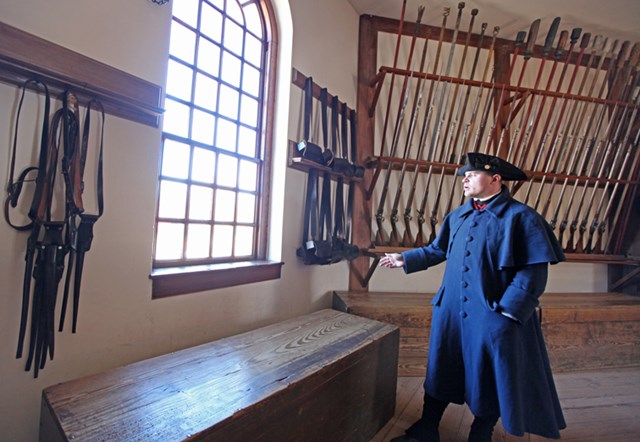
As visitors stroll through Williamsburg’s historical buildings, they will encounter firearms, from the over-the-top display of swords, muskets and pistols covering the walls of the Governor’s Palace (an image that has visually defined Colonial Williamsburg on postcards for decades) to the single fowling piece propped anonymously in the corner of a closet at the Wythe House. Inside the blacksmith shop muskets sit crated and awaiting repair. The powder magazine houses a variety of Colonial-era arms and accoutrements, including swords, holsters, cannon and trade rifles, with interpreters on hand to explain and demonstrate them.
Firearms are displayed as artifacts of historical technology and objects of artistic expression in the Williamsburg’s DeWitt Wallace Decorative Arts Museum. Its “Lock, Stock, and Barrel” exhibit, the museum’s longest running, examines firearm history from matchlock technology to the early years of the Commonwealth of Virginia’s state arms manufacturing system. The exhibit begins with the famous “exploded musket,” a reproduction Brown Bess disassembled as a three-dimensional schematic of the parts of a firearm.
“I think our collection will give firearm enthusiasts a broader appreciation for the technology and how firearms got where they are today,” Goldstein said. 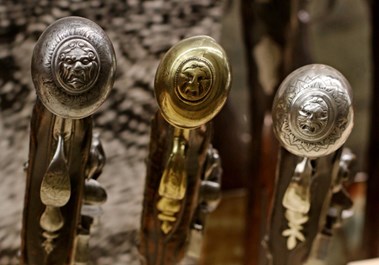
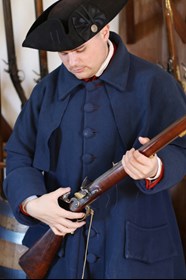
The museum’s collection also showcases firearms as high art. Tucked among exquisite furniture and extravagant works of silver are two superlative examples of early American gunsmithing—a pair of pistols from the Simon Lauck shop, with their one-piece over-and-under barrels, and the stunning John Sheetz longrifle.
The story of how the Colonial Williamsburg collection was acquired is as interesting as the guns themselves. When the Governor’s Palace and powder magazine were restored in the 1930s they needed to be stocked. “We had the buildings and we needed a lot of muskets to fill them,” Goldstein noted.
In the days before the reproduction firearms industry that meant acquiring originals. The period between the world wars, when Colonial Williamsburg was being created, was a time when many of the great private European arms collections were being broken up and sold. Colonial Williamsburg had brokers buying original firearms by the crate and shipping them to the United States.
“We were getting ‘the good, the bad and the ugly.’ It varied from some pretty bad pieces to the best stuff on the planet,” Goldstein said.
The result includes what he calls one of the most complete displays of British “Brown Bess” service muskets in the world, a collection so comprehensive that in his 15 years as curator Goldstein has only purchased a single Brown Bess. The Colonial Williamsburg collection is now being rounded out with “surgical” acquisitions, he says, like the recent purchase of a Revolutionary-era wall gun. Gun enthusiasts who are fans of Colonial Williamsburg often donate items or earmark financial gifts specifically for the Foundation’s firearm collection.
The collection’s original firearms are augmented with modern reproductions, which allow for daily handling and firing and for display in “the touch zone” of Williamsburg’s buildings, though Goldstein notes that it is important to “avoid fraud” by only displaying reproductions of firearms of which Colonial Williamsburg has originals in its collection.
There is also a behind-the-scenes aspect of the collection. Goldstein is responsible for conserving, documenting and storing the firearms, along with making a research library and study collection available to historians.
The longstanding and iconic “Lock, Stock And Barrel” exhibit at Colonial Williamsburg will close at the end of 2018. It will be replaced by “To Arm Against An Enemy: Weapons Of The Revolutionary War,” an exhibit scheduled to open in the DeWitt Wallace museum in April 2019 as Colonial Williamsburg continues to showcase firearms as a crucial part of the art, technology and everyday life of Colonial America.
For more, visit ColonialWilliamsburg.org.
For information on a Williamsburg program where you can fire one such gun yourself, click here.
Additional Reading:
Making the American Rifle at Colonial Williamsburg
Video--Preserving the Skills: Gunsmithing at Colonial Williamsburg
Video--Colonial Wiliamsburg's Fire a Flinktlock Program















